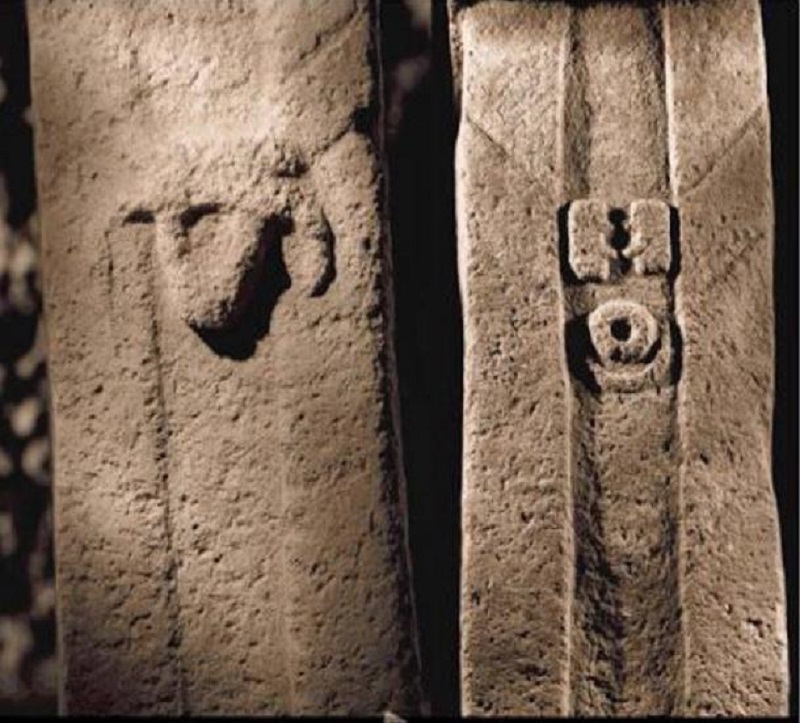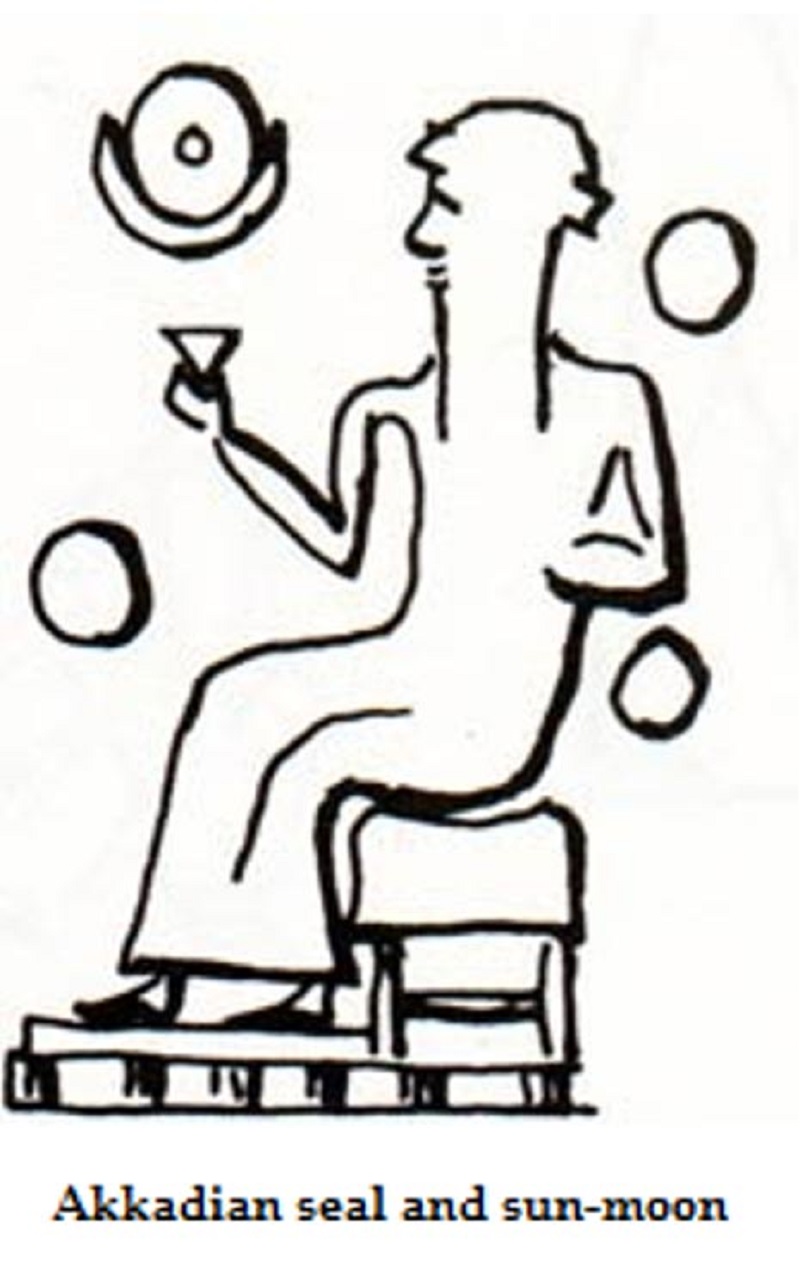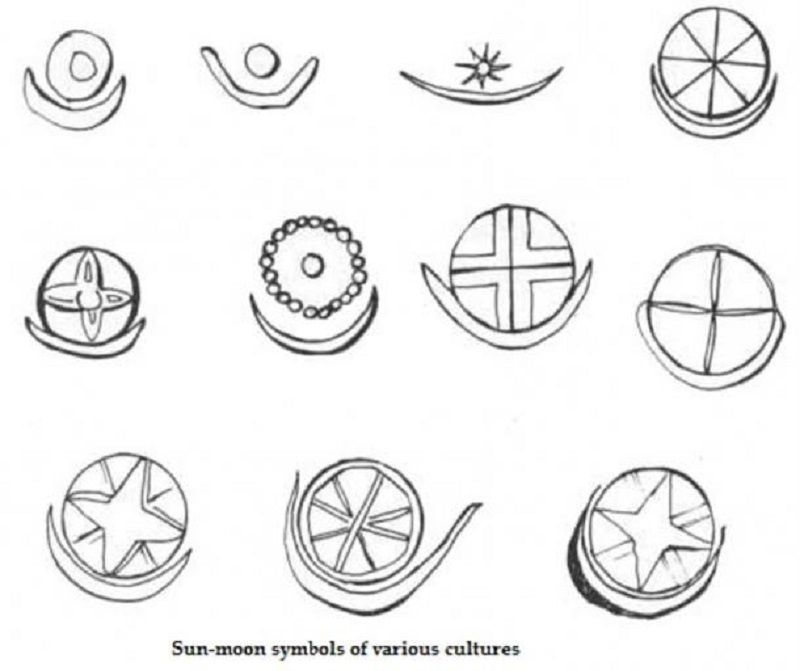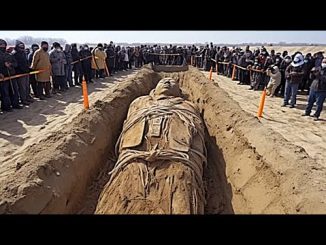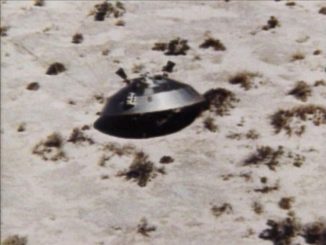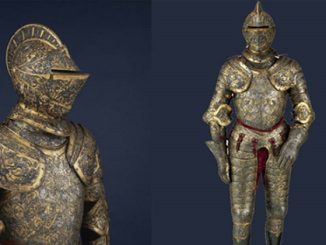Göbeklitepe is an ancient and important site that pushes back the beginnings of civilization further than we previously thought. As each temple at a Neolithic site is excavated, the story of human history is rewritten.
Göbeklitepe is located in the Turkish city of Şanlıurfa (or Urfa) and it stands out as one of the most interesting prehistoric archaeological sites today. According to the results of scientific research, the Göbeklitepe temples have been dated as early as 9600 BC – in archaeological language, it is considered Neolithic Pre-Pottery A.
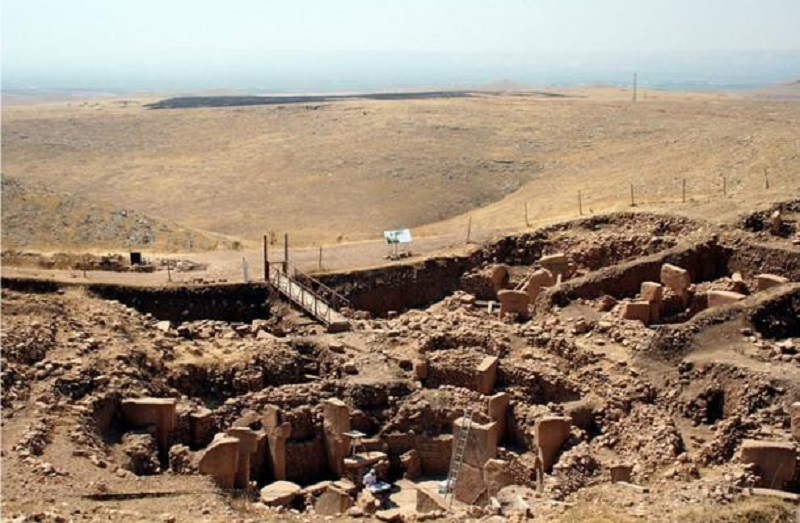
Göbeklitepe excavation site in Türkiye. Yes/ Flickr
During the construction of Göbeklitepe, there were no civilizations as we know them such as those in Sumer or Egypt. The discovery of Göbeklitepe caused a paradigm shift in archaeology: religion appeared before the emergence of agriculture and permanent settlement, and not after as was commonly thought.
German archaeologist Klaus Schmidt, who led the excavations at the ancient site of Göbeklitepe may have played an influential role in subsequent civilizations, just as Sumer and Egypt had [8].
Can the origins of the Sumerian and Egyptian gods and goddesses be found here, in Göbeklitepe?
Göbeklitepe has many round and square temples. Klaus Schmidt and other scientists claim that these structures may have been used to perform rituals and cult beliefs, and it is likely that Neolithic shamans headed the rituals held in these mysterious temples [8].
Six structures have been excavated since the start of the 1995 season. As of 2015, more structures are still being revealed. The temples are identified as A, B, C, D, etc.
The common thread connecting the pagodas is two T-shaped pillars located in the center of the pagodas, surrounded by 10 or 12 pillars. The height of the columns varies from 3 to 6 meters (10 and 20 feet). These T-shaped pillars can be found not only at Göbek
litepe but also at nearby Neolithic settlements such as Nevali Çori, Hamzan Tepe, Sefer Tepe and Karahan Tepe.
Almost all the pillars at Göbeklitepe have various animal carvings, depicting snakes, foxes, cranes, wild boars and other creatures. The bas-reliefs show us a rather sophisticated artistic sense. Besides various animal sculptures, totem poles and plaques with signatures were also unearthed.
We also see vague symbols on some of the pillars. In addition to the “”H” and “I” symbols, several sun and moon symbols were also found carved on some of the pillars, Schmidt revealed. The sun and moon signs engraved on the central columns of Temple D are quite remarkable. The moon is depicted as crescent-shaped and the sun is depicted as having a hollow in the center. Some of these symbols will certainly be important in solving the mysteries of Göbeklitepe.
Many of the pillars at Göbeklitepe are engraved with symbols.
The astronomical meaning of these symbols is no longer in dispute. In relation to their location in the sky, the meaning of these symbols can be cosmic or celestial. Perhaps the Göbeklitepe temples were built as observatories for the purpose of observing celestial bodies such as planets and constellations.
Italian astronomer Giuglio Magli from the Polytechnic University of Milan suggested that the Göbeklitepe temples may have been built to observe Sirius, the brightest star in the night sky. According to Magli, the Göbeklitepe community may have celebrated the birth of this new bright star.
Similarly, another astronomer, BG Sidharth expressed that the 12 pillars located around the center of Temple D could represent the 12 months of the year. Sidharth also believes that the symbol “H” on one of the central pillars represents the constellation Orion. He believed that the sun and moon signs referred to a solar eclipse [4]. However, according to Schmidt, a sign resembling the letter H characterizes male and female relationships [8]. On closer inspection, it appears to be some kind of relationship between two individuals: both extend their hands to each other.
Furthermore, Joe Plegge emphasizes that the perforated stone at Temple D may have been designed to determine the equinoxes and solstices. He examined this theory in his book “Stonehenge Türkiye: Göbeklitepe” [7].
The middle columns depict the letter “H” and the sun-moon signs that create the stylization of the human body, as it is widely accepted. Arms and hands can be seen accurately. Human faces are not clear. It is possible that they were not human but Neolithic gods or goddesses. We see arms placed on either side of the column and hands clasped together above the navel. This standing position may be considered special and perhaps sacred. The Sumerian goddess Inanna is characterized by her standing position resembling the central pillars of Göbeklitepe. Likewise, the giant statues of the Easter Islands were also built in this sacred standing position (hands on omphalos). According to some, this pose symbolizes “birth” or “rebirth”.
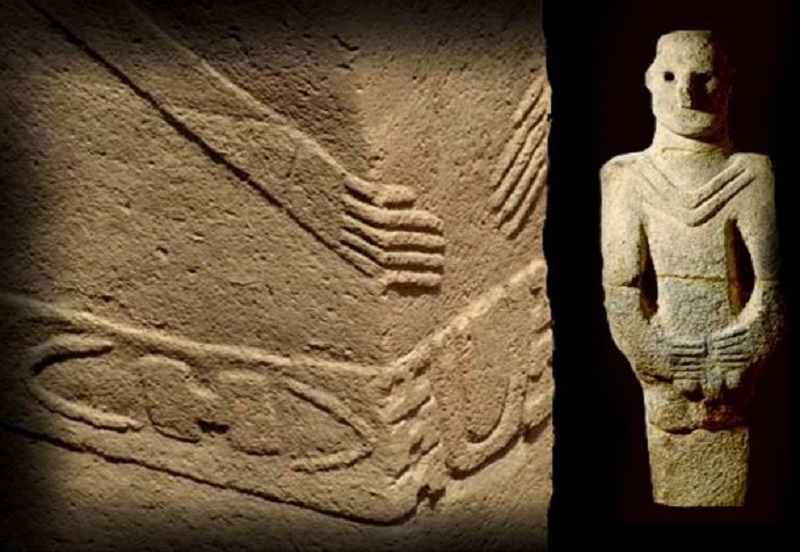
The hands are carved into the columns, touching each other in the navel area, like many other figurines and figures found around the world.
The sun and moon symbols are not only seen on the central columns of Temple D of Göbeklitepe. Later in history, we see these markings on Sumerian and Akkadian cylinder seals as well as on other ancient works of art.
According to historian Emel Esin, the primitive Turks once named this symbol “Kün-ay (Sun-Moon)” [3]. Kün-ay has sacred significance in primitive Turkish culture. Emel Esin explains that this Kün-ay is a sign of the first crescent: the first day of the first month of spring. At the same time, it naturally symbolizes the spring equinox, March 21. On that day, the duration of day and night is almost equal. At the time of the equinox, the primitive Turks – and also the modern Turks – celebrated the coming of spring, which in a sense is the awakening of nature and rebirth Earth. During this period, the fertility of the earth will increase and the land will yield abundant produce.
Emel Esin also emphasized that the Chu Turks used this symbol on their national flag around 2000 BC in Central Asia. According to Esin, the Kün-ay symbol is the origin of today’s national flag of the Republic of Türkiye with its crescent and star [3]. The Kün-ay sign has been found in the artwork of the Hun Turks. In addition, we see the Kün-ay motif and the crescent star on the coins of the state of Gokturk. In modern-day Mongolia (a former Proto-Turkish region), the national flag has two columns and the symbol Kün-Ay.
The original Turkish sun-moon signs Kün-Ay and Göbeklitepe are not just similar: they are completely identical! On both symbols we see a cavity in the middle of the sun symbol. This is a description that is repeated so often that we cannot say it is a coincidence. According to Emel Esin, the cavity in the center represents the bright side of nature [3]. It depicts the coming of spring, it depicts the rebirth of nature and also fertility.
Dr. Cathy Burns considers the crescent star motif as a “fertility symbol” in her study “The Hidden Secret of the Eastern Star” [1]. Similar crescent-shaped motifs can be seen on images of the temple of Aphrodite and on ancient coins of Cyprus. As is known, Aphrodite is the Greek goddess of love, beauty, fertility and fertility. In Greek mythology, she corresponds to the Sumerian goddess Inanna. In addition, one of Inanna’s symbols is the crescent star. Hitittes considered this a sign of rebirth. The Lakota Indians used the crescent star symbol to identify solar eclipses.
BG Sidharth’s comments on the sun-moon imagery are relevant, in that he believes that the sun-moon symbols found on the central pillar in Temple D depict a solar eclipse.
It is likely that the crescent star sign then symbolized the rebirth of nature. If so, the sun-moon motif on the Göbeklitepe column could also symbolize the beginning of spring, the time of the equinox and the rebirth of nature and the earth.
[…]
Göbeklitepe, one of the most important archaeological discoveries of our time, continues to defy explanation, but further study of the world’s first man-made temple may reveal more about the understanding of the Neolithic period and may send us a message from the ancient past.
